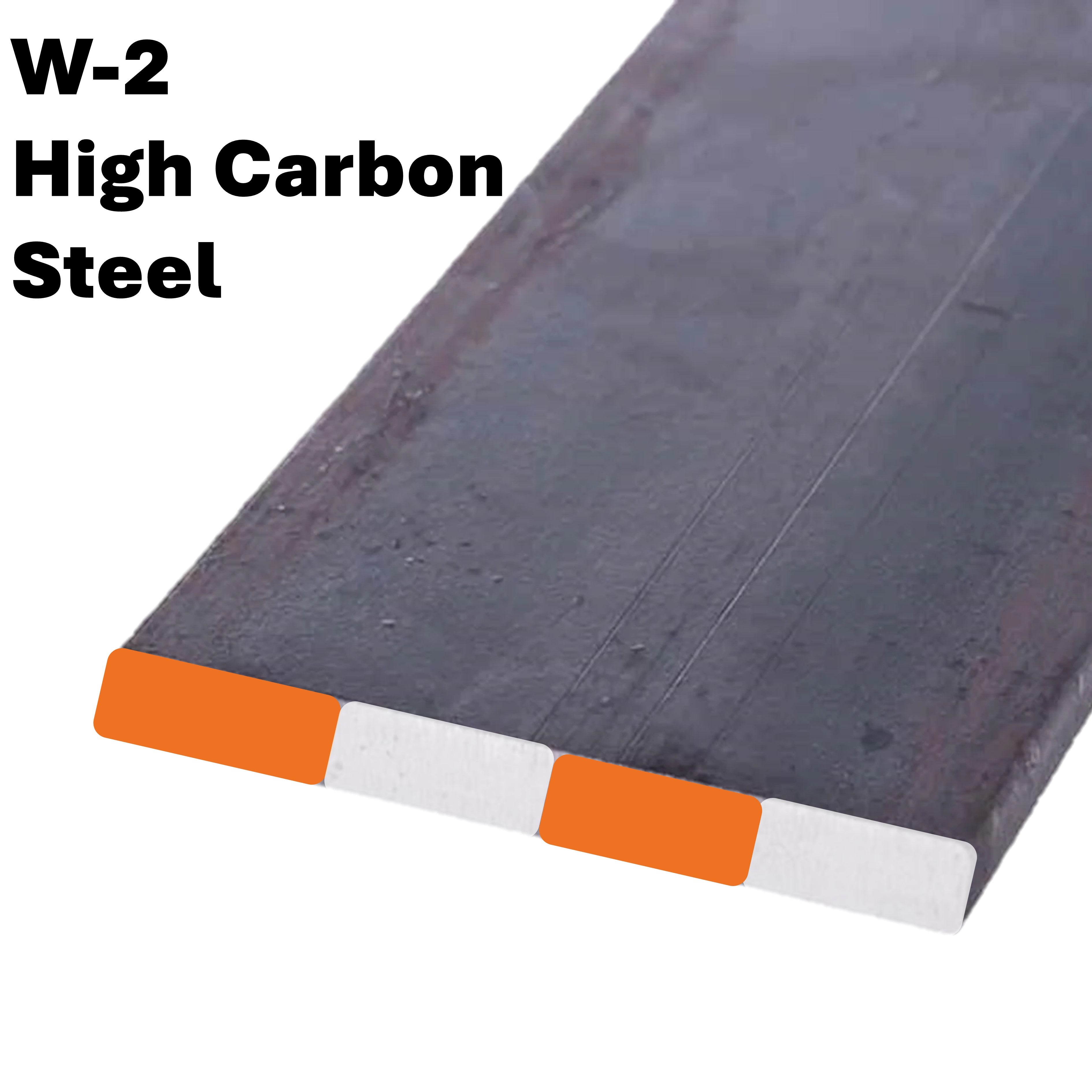W2 - High Carbon Blade Steel Flat Bars
This steel is manufactured in Germany and is supplied annealed. It has a smooth surface and is soft in its annealed state, making it easy to cut, grind, drill, and file. Thickness may vary slightly from batch to batch.
W2 High Carbon Blade Steel is a water-hardening tool steel known for its fine grain structure and exceptional ability to form a sharp, fine edge. W2 is popular among bladesmiths for making high-performance cutting tools and knives. It has been traditionally used for everything from tools and dies to swords and large knives due to its high carbon content and excellent hardness. One of the unique characteristics of W2 is its ability to create a beautiful hamon (temper line), making it especially prized by custom knifemakers who work with differential hardening techniques.
W2 can achieve very high hardness, which gives it superior edge retention, and yet it can maintain a good level of toughness when heat treated correctly.
Composition
- Carbon – 0.85-1.05%
- Manganese – 0.10-0.40%
- Silicon – 0.15-0.30%
- Vanadium – 0.15%
- Phosphorus – 0.025% max
- Sulfur – 0.025% max
- Iron – Balance
Performance Characteristics
-
Toughness 6/10 – W2 can be tough, but its relatively high carbon content means it is more prone to chipping than other lower-carbon tool steels when pushed to its maximum hardness. It’s best suited for medium-sized to small knives, such as hunting knives, kitchen knives, and short swords. Differential heat treatment can improve toughness by giving the blade a softer spine and a harder edge.
-
Edge retention 7.5/10 – W2 is known for its excellent edge retention, capable of holding a razor-sharp edge for extended periods. It can achieve very high hardness (up to 66HRC), which makes it suitable for fine cutting tools, including chisels and razors, as well as knives.
-
Corrosion resistance 2/10 – Like most high-carbon steels, W2 is highly susceptible to rust and corrosion if not properly cared for. Regular oiling and maintenance are necessary, especially in humid or wet environments. It offers no inherent corrosion resistance and requires frequent attention.
Recommended Heat Treatment
- Heat blade to 800-850°C (non-magnetic stage)
-
Quench immediately in water for maximum hardness or oil for a less aggressive quench
- Temper at 150-200°C for 2 hours, twice, depending on the desired hardness
Note: W2 is well known for its ability to form a hamon when differentially heat treated. For those looking to create a hamon, quenching the edge in water while leaving the spine exposed can yield striking results. However, water quenching can increase the risk of cracking, so care must be taken during this process.
Approximate As-Quenched Hardness Before Tempering:
- 800-850°C followed by water quench – 64-66HRC
- 800-850°C followed by oil quench – 62-64HRC
Recommended Working Hardness
58-64HRC
















